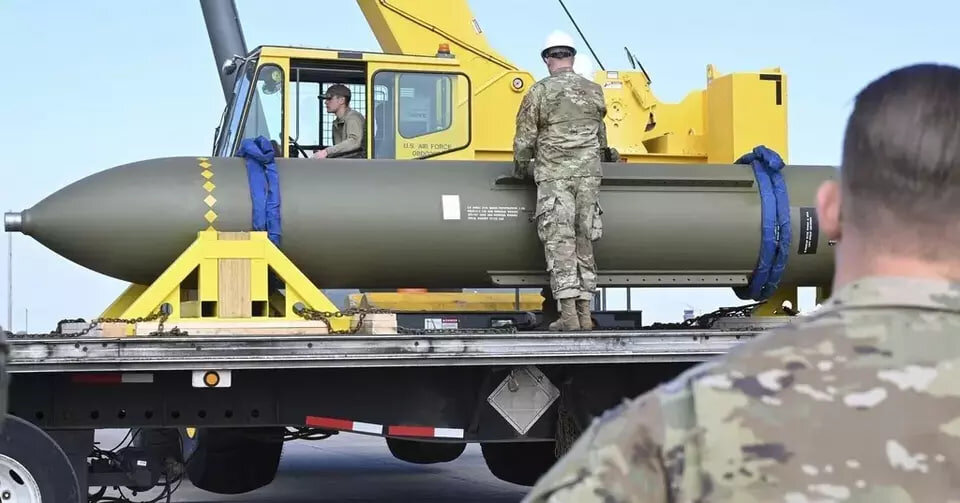Joint operation by AP and U.S. Air Force
Mere charade for the policy of making military threats look

TEHRAN – With Iran steadily moving to shore up its nuclear capabilities, the U.S. has resorted to charades and hackneyed tactics to intimidate Iran. But its effort will come to naught.
Earlier this month, the U.S. Air Force posted a rare photo of a widely known bomb that has been long rumored to be built exclusively to destroy Iran’s underground nuclear facilities. The photo of the GBU-57 bomb is also known as the Massive Ordnance Penetrator.
The bomb has been associated with Iran right from the start. It was developed in the 2000s as the U.S. highlighted concerns over Iran’s nuclear program. Yet it has never been used against Iran or even displayed to the public in detail.
The photo was then deleted hours after publication.
Then the Associated Press started from where the U.S. Air Force left off. In a slanted report, the American news agency alleged that Iran is building an underground nuclear facility near the Natanz nuclear plant that is likely to be impervious to U.S. penetrator bombs such as the one discussed above.
“So the depth of the facility is a concern because it would be much harder for us. It would be much harder to destroy using conventional weapons, such as like a typical bunker buster bomb,” AP quoted a researcher who analyzed the alleged construction at Natanz as saying.
AP added, “Such underground facilities led the US to create the GBU-57 bomb, which can plow through at least 60 meters (200 feet) of earth before detonating, according to the American military. US officials reportedly have discussed using two such bombs in succession to ensure a site is destroyed. It is not clear that such a one-two punch would damage a facility as deep as the one at Natanz.”
The news agency went so far as to speculate about the resumption of sabotage against Iran. “With such bombs potentially off the table, the US and its allies are left with fewer options to target the site. If diplomacy fails, sabotage attacks may resume,” it said.
This kind of highly charged language and reporting is hardly new. The West has long sought to browbeat Iran into relinquishing its nuclear work with such threats. But they never got their desired results.
This time the West is resorting to thinly-veiled threats at a time when the acceleration of Iran’s nuclear work is a direct result of U.S. bullying. One has to remember who withdrew from the 2015 nuclear deal, officially known as the Joint Comprehensive Plan of Action (JCPOA).
Instead of reversing course, the West is now unabashedly using banal strategies put forth by hawks who never really wanted diplomacy with Iran. These hawks first dissuaded the Biden administration from making up for Trump’s mistake and are now pushing the Biden administration into addressing the issue of lack of fear on the part of Iran as if Tehran has ever feared Washington.
Iran has long said that it only responds to diplomacy and respect. Threats never work with Iran.
